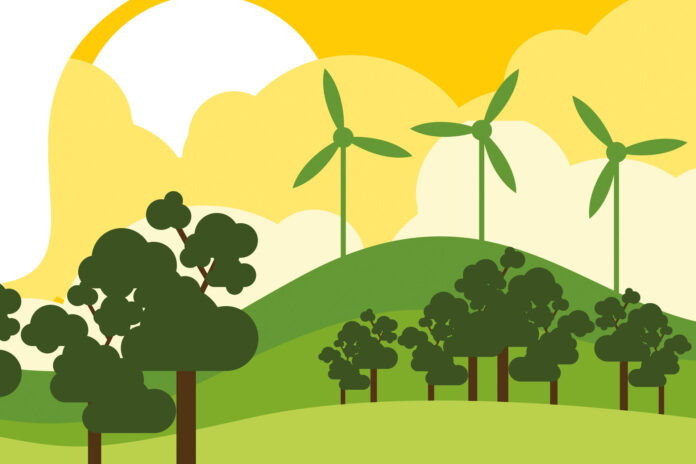
Alissa MacMillan
Q: I would love to eat more of a plant-based diet, which you’ve mentioned in this column before as being good for the environment, but I have trouble managing it. Any suggestions?
A: It’s well-known by now that, with a plant-based diet, there are benefits for human health and for the earth. But, knowing what’s best is one thing, making it happen quite another.
It’s easy to say we have to cut back on animal-based foods because of the associated environmental impacts, but “it’s not always as easy as it sounds,” says Dr. Aylin Sahin, lecturer at UCC in the School of Food and Nutritional Sciences. There are implications for our diet and health along with economic and social considerations.
Indeed, one way to reduce our carbon emissions is to be conscious of our food choices, she says, looking to “what we eat and where food comes from.”
According to Sahin: balance is everything.
“Sometimes consumers are very extreme” and they’ll declare: “we have to cut out meat and dairy and all animal based foods.” But we fail to consider the possible health implications, she explains. “With the pure plant-based diet, we might get our protein and increase dietary fibres, but we will have a serious issue with micronutrients, those minerals and vitamins, like the calcium we take in with dairy products, or issues with iron.”
Sahin cites work from UCC’s Dr. Elaine McCarthy, whose research explores the impact low iron can have on child and infant development.
“We are so focused on the macro-nutrients,” Sahin adds, like protein, fat, or carbohydrates, that we sometimes overlook the micro. “The iron in beef is very easily absorbed, it’s the micronutrient; protein is not the issue.”
That being said, “we are not eating enough fruits and vegetables, not in Ireland, not in the whole of Europe.”
From the farming side, when done right, growing plant-based foods can lower greenhouse gas emission and uses less land for food production. It can also contribute to biodiversity, “if done correctly and strategically.” Sahin notes that the business-side needs to be considered, especially for farmers and primary producers, as adjustment of land use requires a careful transition.
“It’s not just the environment, this is only one dimension of sustainability,” she adds. “There is also the social dimension, which we tend to forget very easily. The diversity of foods and traditions, our culture, shapes us and how and what we consume in many ways.
“If the whole world were to have one standard diet, we would lose our identity very quickly,” she adds, and it wouldn’t be great for our health.
LEGUMES
Different countries are also faced with different economic means and availability to types of food, food security, and food safety. This means that “every country needs to be looked at specifically – there is no one universal answer for everyone.” With varied strengths and weaknesses, countries need to be seen on a case-by-case basis, she says, this being the business-side to sustainability.
“Some countries rely on fish, others rely on carbohydrates but are lacking protein, we are okay with protein but have to worry about dietary fibre. It’s all about the balance.”
In her own research, Sahin looks at some protein alternatives on the market which are often not as adequate nutritionally. Dairy alternatives can be lower in protein, composed of at least ten ingredients, and are much more expensive than the animal counterpart. Meat alternatives also use a lot of ingredients but getting enough protein “is not a huge issue in the western world.” Legumes, which are beneficial for soil health because they are nitrogen fixators, are often used as protein powders and in food production. But they are even better for dietary fibre as whole foods.
“A vegetarian diet is quite okay, and the Mediterranean diet is an example of a very healthy diet, where you have small amounts of meat and fish,” as is the “flexitarian,” mostly plant-based and also integrating small portions of meat and fish.
Sahin reminds us to combine legumes with cereals, as this is the best way to get all of your essential amino acids in. “Beans on toast is great,” she notes.
The source of meat is critical and the type of meat you eat also matters.
“Ireland prioritises sustainable farming with grass-fed livestock and by ensuring animal welfare,” Sahin notes, which is “completely different from other parts of the world where cows are crammed into small spaces, releasing stress hormones.”
DIET DIVERSITY
Food regulations are also different everywhere, even labels – the more transparent the better, although labels aren’t always clear.
One example is the “Nutri-Score” rating, which you’ll find on packages, accounting for negative elements like sugar, saturated fats, and salt, and positives like protein, fibre, fruits, vegetables and nuts. “They would throw off an average consumer,” Sahin says. Products are given a letter – A, B, C, D or E – and they are also given a colour: A is green, for example. The consumer sees that and thinks, “oh, this is healthy,” but the method ignores important factors like processing levels, explains Sahin. For example, scores may or may not reflect the nutritional change that happens during preparation at home. Too, “very unhealthy snacks might have a Nutri-Score of A/green, but still be very high in saturated fats. But compared to others, they might be one of the better ones.”
She adds, “You can pick all of your food based on the green A Nutri-Score but still be very unhealthy.”
As for day-to-day meals, “The more colourful your plate is, the better,” the ideal filled with more than half fruit or veg, the most important thing for your health being a diverse diet.
If you can limit having meat prepared at home to two to three times a week, you are on a great path, she adds. Lunch can be tricky, with meats slipping into sandwiches. Another idea, which some office canteens in Germany and Austria use, is a “meat free Monday,” which helps people watch what they’re eating and begin to reduce meat intake.
Making sure you’re active and not overeating helps, as does eating locally, which reduces the need for transportation and storage. All small ideas for ushering in even more plant-based foods for a healthier body and greener earth.











